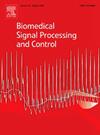生物医学时间序列分析的机器学习算法的可解释性和准确性-范围审查
IF 4.9
2区 医学
Q1 ENGINEERING, BIOMEDICAL
引用次数: 0
摘要
当前生物医学时间序列(BTS)(例如,ECG, EEG)分析的研究侧重于各种深度学习方法的应用,以改进状态和疾病的分类,预测或评估。当在足够大的数据集上训练时,这种方法大多会产生高度精确但无法解释的模型,有时可能具有事后解释性。由于医疗保健等高风险领域需要模型解释,并且在可能的情况下,除了模型效率之外,还需要高可解释性,因此目前在该领域提出的可解释机器学习模型令人惊讶地稀缺。虽然机器学习社区意识到在BTS分析中需要可解释的机器学习,但提出的模型并没有反映这一需求。在这篇范围综述中,我们考虑了来自Web of Science数据库的3万多篇研究,筛选了近500篇研究,并选择了50多篇高质量的研究进行详细分析。这些研究的重点是可解释的方法,准确的方法,以及连接两者的途径。大多数研究分析了ECG和EEG信号,并集中在有限的应用范围内,包括情绪识别、心脏病、癫痫和运动图像,这反映了高质量公共数据集的稀缺性。k近邻和决策树是最常用的可解释方法,而具有循环层或注意层的卷积神经网络达到了最高的精度。在BTS分析中平衡可解释性和准确性的方法包括先进的广义加性模型和基于优化的决策树、规则学习和线性模型方法。这些方法在BTS分析中应用较少,值得进一步研究。本文章由计算机程序翻译,如有差异,请以英文原文为准。
Interpretability and accuracy of machine learning algorithms for biomedical time series analysis – a scoping review
Current research in biomedical time series (BTS) (e.g., ECG, EEG) analysis focuses on applications of various deep learning approaches to improve classification, prediction, or assessment of states and disorders. When trained on sufficiently large datasets, such approaches mostly lead to highly accurate, yet uninterpretable models, sometimes with a possibility for post-hoc explainability. Since high-stake areas such as healthcare warrant model explanations and, where possible, high interpretability in addition to model efficiency, there is nowadays a surprising scarcity of interpretable machine learning models proposed in this field. Although the machine learning community is aware of the need for interpretable machine learning in BTS analysis, the proposed models do not reflect this need. In this scoping review, we considered over 30,000 studies from the Web of Science database, screened nearly 500 studies, and selected over 50 high-quality studies for detailed analysis. These studies focus on interpretable methods, accurate methods, and approaches bridging the two. Most studies analyzed ECG and EEG signals and concentrated on a limited range of applications, including emotion recognition, heart diseases, epilepsy, and motor imagery, reflecting the scarcity of quality public datasets. K-nearest neighbors and decision trees were the most used interpretable methods, while convolutional neural networks with recurrent or attention layers, achieved the highest accuracy. The methods that balance interpretability and accuracy in BTS analysis include advanced generalized additive models and optimization-based approaches for decision trees, rule learning, and linear models. These approaches warrant further studies, as only a few of them were applied in BTS analysis.
求助全文
通过发布文献求助,成功后即可免费获取论文全文。
去求助
来源期刊

Biomedical Signal Processing and Control
工程技术-工程:生物医学
CiteScore
9.80
自引率
13.70%
发文量
822
审稿时长
4 months
期刊介绍:
Biomedical Signal Processing and Control aims to provide a cross-disciplinary international forum for the interchange of information on research in the measurement and analysis of signals and images in clinical medicine and the biological sciences. Emphasis is placed on contributions dealing with the practical, applications-led research on the use of methods and devices in clinical diagnosis, patient monitoring and management.
Biomedical Signal Processing and Control reflects the main areas in which these methods are being used and developed at the interface of both engineering and clinical science. The scope of the journal is defined to include relevant review papers, technical notes, short communications and letters. Tutorial papers and special issues will also be published.
 求助内容:
求助内容: 应助结果提醒方式:
应助结果提醒方式:


